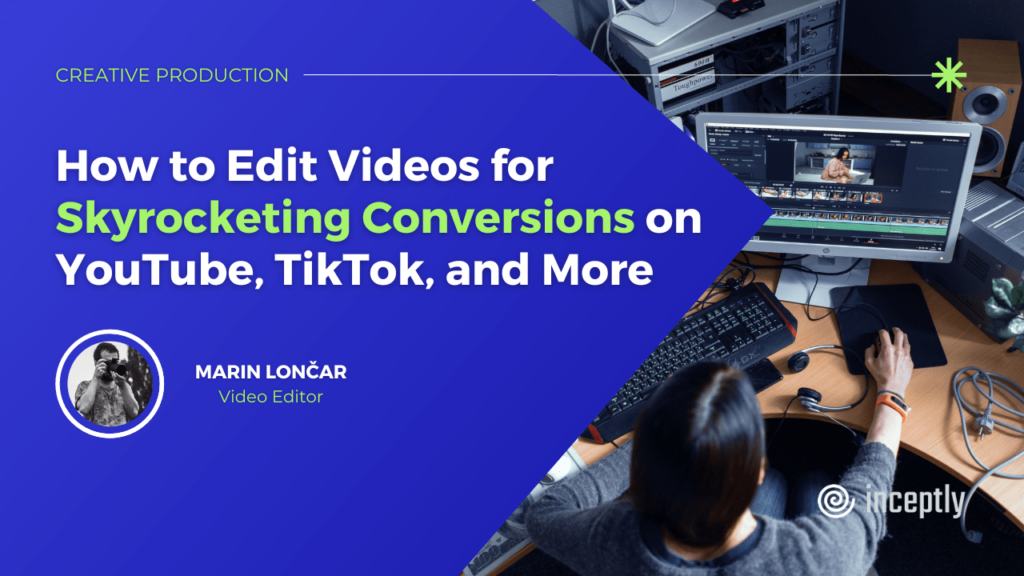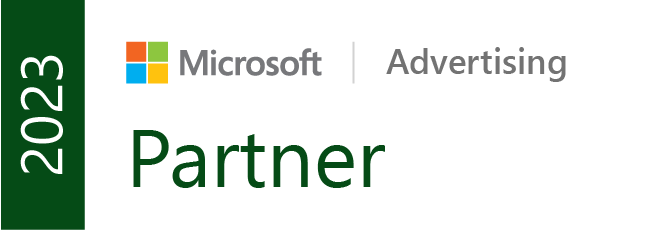
Greetings to all the direct-response marketing nerds!
By now, you’ve probably seen Mirna’s post about the benefits of using creatives in all three aspect ratios—horizontal, square, and vertical—in your video campaigns. (If not, definitely go check it out here! Spoiler alert: this approach can help you boost conversions by up to 20%!)
If you read the post and decided not to give up the reigns to Google’s Video Enhancement tool, you might be curious how to generate all those ad variations without spending too much time or effort on them. Well, you’re in luck!
My name is Marin, and as a seasoned Video Editor, I am here to share some tips that will make your life easier and your video ad campaigns more effective. So let’s get started!
Understanding Aspect Ratios
First things first, let’s get the basics out of the way.
“Aspect ratio” refers to the proportional relationship between the width and height of a video frame. It determines the shape of the video and plays a significant role in how it appears on various platforms. Common aspect ratios include 16:9 (horizontal), 1:1 (square), and 9:16 (vertical). Each aspect ratio has its own advantages and is best suited for specific platforms and viewing experiences.
Using the correct aspect ratio for each platform/campaign is essential to ensure that your video ad appears as intended without distortion or cropping. When a video is not properly formatted, it can appear stretched, squeezed, or have letterboxes (black bars) on the sides. This can negatively impact the viewer’s experience and make your content less engaging.

Best Practices for Creating Ad Variations
Converting a video from one aspect ratio to another can be challenging, especially if you have many assets and need to make significant adjustments. Of course, you should be smart about utilizing any relevant features your editing software provides (like Smart Conform in Final Cut Pro or Auto Reframe in Premiere Pro). However, those don’t always do the trick.
So here are the techniques and shortcuts our team at Inceptly uses to optimize video ads for various aspect ratios:
1️⃣ Shoot wide for the presenter or narrator footage
When shooting footage that includes a presenter or narrator, it’s recommended to shoot it wider than necessary. This gives you more freedom when it comes to cropping your shot, and allows you to have some extra space between the head and the top of the screen, ensuring that the video looks good when viewed on mobile devices.

2️⃣ Start with a 16:9 horizontal video
If you are creating videos in multiple formats, starting with a 16:9 horizontal video as the base is best. This video can then be repurposed for square and vertical formats by adding headline text at the top and bottom of the frame. This approach saves time and allows you to test different headline variations easily.


Some examples of repurposing
3️⃣ Choose wider compositions for stock footage
When selecting stock footage for your video ad, opt for wider compositions. This will make adjusting the footage from horizontal to vertical and square formats easier.
🌟 Bonus tip: If you have no option but to repurpose a vertical video for a horizontal format, play around with the split screen approach and place a vertical video on one side while showcasing a product or using animated captions on the other side.



Be creative with split screen techniques
4️⃣ Use panning to showcase multiple subjects
Static shots can be enhanced in vertical formats by panning across the scene. If you have a shot with multiple subjects, such as three people, you can pan the shot to show all three individuals or highlight different elements within the frame. This technique adds movement and visual interest to your video ad.
Smart panning will make your ad look more dynamic and engaging
5️⃣ Rotate templates and assets
When working with templates and other assets across different formats, having them available in all aspect ratios is helpful. However, if you can’t find templates specifically designed for vertical or square formats, you can try rotating your horizontal template by 90 degrees. This allows you to utilize the entire template and create visually appealing videos across all formats.

6️⃣ Account for user interface overlays
This might be obvious, but still needs to be said: Remember that each platform has its own user interface overlays, such as comment buttons, like buttons, and share buttons (and those move around based on what device a viewer uses to consume content on said platform).
It’s important to position key elements of the video, such as text animations, captions, and callouts, so they don’t clash with the app’s UI, preventing the user from completing the desired action, and, thus, wasting your ad budget.



Use the gudelines above to account for social media user interface overlay (free download here)
By following the strategies mentioned above, you can ensure that your video ad looks great in every format and effectively communicates your message to your target audience, thus boosting your ad conversions by up to 20%.
If you have any life hacks like that of your own, or if you would like to learn more about video editing geared for maximizing creative performance results from me and our team, let us know.
Until next time,
Marin

Marin Lončar, Video Editor
Quick, efficient, and focused, Marin is an editing whizz behind many of the videos that helped Inceptly bring $950+M in attributed revenue for clients. In addition to producing visually compelling ads that convert, he's a treasure trove of editing hacks.
Like this post? Let's continue the conversation!
Get in touch with us by shooting us a quick email or tagging us on LinkedIn or Instagram, and sharing your thoughts. Your feedback helps us keep our blog relevant and interesting.
Like the advice but not sure how to implement it? Let us help!
Contact us to discuss avenues for your brand’s growth with performance advertising.
You’ll get an insightful evaluation of your ads + actionable tips to help amp up your direct response revenue. No strings attached!
Get Our Newsletter
Need Help?
Get in touch with us for an insightful evaluation of your ads + actionable tips to help amp up your direct response revenue



